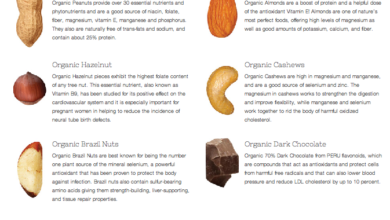Types of Pots to Grow in the Garden: Complete Guide with Photos
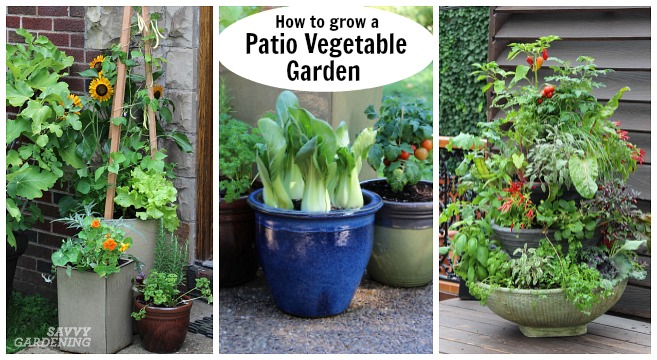
Hello everyone! After explaining how to choose the pots for the garden, today I am going to present you the different types of growing pots that we can find on the market. I hope that, together with the previous article, it will help you choose the ideal container for your potted garden or flowerpot.
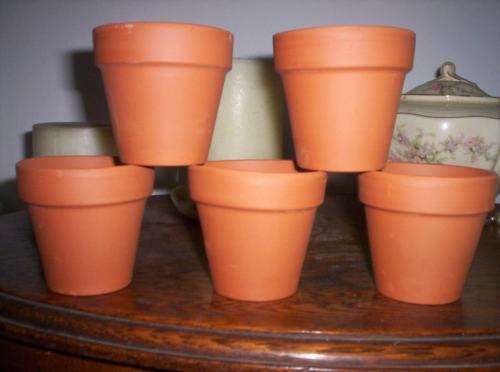
TYPES OF POTS FOR THE URBAN GARDEN
Traditional pots and planters
We can use pots or planters in windows or on balconies to grow medicinal plants, vegetables and vegetables instead of flowers and thus obtain our own harvest. In order not to stain the ground or wet the neighbor’s balcony, in many cases, saucers or pot holders are used to collect the excess water from irrigation.
If you put a saucer under the pot to collect excess irrigation water, you should avoid letting the collected water remain stagnant for long periods of time as it can be harmful to both the container and the plant.
In turn, there can be several types of pots and planters:
- Clay pots: They are quite heavy and fragile. The problem they present is that, in hot climates, the water in the substrate evaporates very quickly because the walls are very porous. For Cacti and other Succulents it may work well, but not for most crops. In addition, strong frosts can break them.
- Terracotta pots: It is a natural material and very aesthetic, thanks to its ocher colors, although they can be somewhat expensive. They break easily if hit and are only resistant to mild frosts, although there are models with protection against the cold.
- Plastic or resin pots and planters: They are light, resistant, economical and easy to clean. There are models that imitate those made of clay and terracotta. Unlike the previous ones, they are ideal for those plants that need constantly moist substrates, such as spinach or broccoli. In relation to this, the drainage of the pots must work perfectly, through holes in the base and a layer of sand in the bottom. The drawbacks of plastic are its artificial and unnatural appearance, and that it discolors as a result of the incidence of the sun.
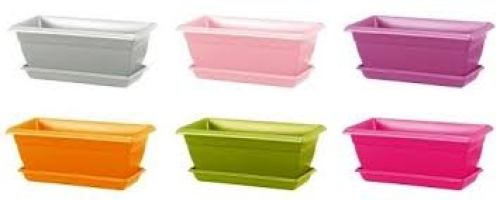
- Wooden pots and planters: Wood is a warm and temperature-absorbing material, as well as decorative. They require a varnish to waterproof them and preservative products to prevent them from rotting.
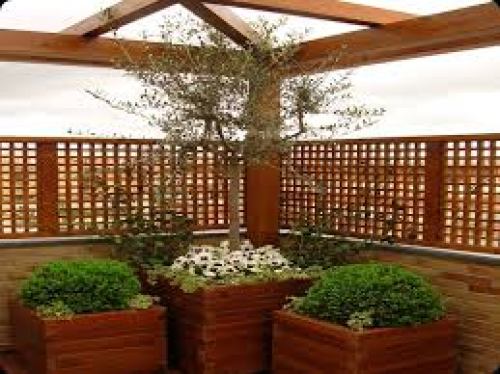
- Stone or concrete pots: It is the most resistant and durable material. They fit very well in rustic environments, such as country houses. Their main drawback is that they are too heavy to move.
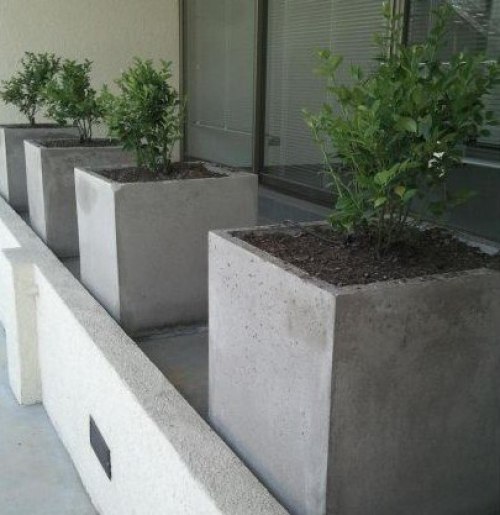
cultivation tables
Undoubtedly the most comfortable solution for growing at home, as they raise the growing surface to a much more comfortable working height, so we won’t have to bend down. Different sizes and heights are available to work with children, disabled people, etc.
In addition, if wheels are installed, it can be moved from one place to another and it is also a clean container. At 20 cm deep they have a surface of 150×75 cm or 150×50 cm with a capacity of 200 or 130 l respectively, enough to grow various vegetables and obtain a reasonable harvest.
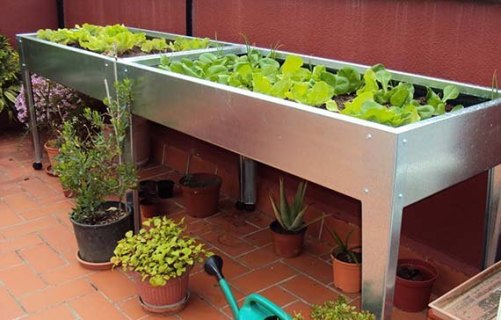
vertical planters
If we have little space, this is a perfect solution to have a small vertical garden, for example with aromatic plants or strawberries in our kitchen. Since the planters are arranged one on top of the other or vertically, the space they occupy is considerably reduced.
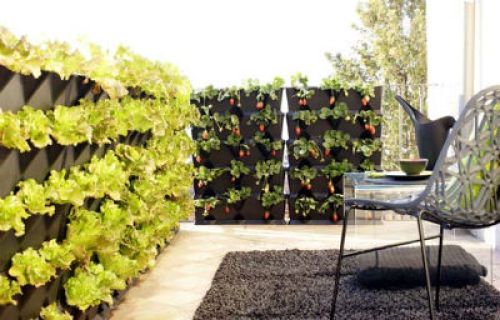
Textile containers for the urban garden
This type of container made from a vegetable fabric and geotextile fabric, with different design lines, can be conceived as individual flowerpots of different volumes, or grouped into linear or square modules whose measurements we can adjust ourselves according to our availability. These are containers that have the advantage of being able to be collected after use, folding and taking up very little space.
This solution is ideal if we only want to enjoy our garden during the spring-summer season and we want to harvest it during the winter. In addition, the materials that form them allow better aeration of the roots of our plants. It is a system that allows us to work with a large volume of substrate, but on the other hand, its transport and assembly are simple and ideal for roofs or balconies that are difficult to access.
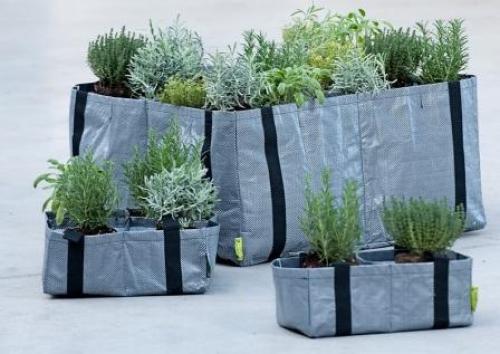
Garden beds or raised beds
You can also choose to delimit a space with wood or concrete blocks, on which we will have the substrate. In this case, it is advisable to first cover the ground with geotextile material, which is waterproof, so it allows water to pass through, but prevents loss of substrate and nutrients, although you will have to make a conduit to collect the drained water.
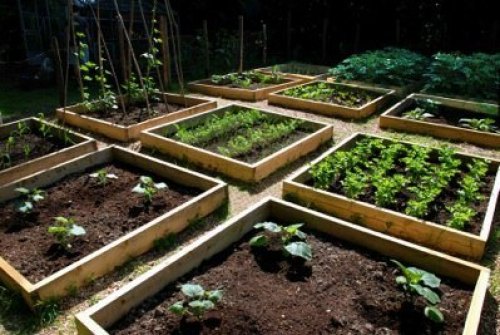
Special pots: Hydroplanters and biodegradable pots
They are pots or planters that have a tank at the bottom that fills with water. In this way, the plant has water for a longer time (2 or 3 weeks). With a buoy we can visualize the water level to know when it is necessary to irrigate. They are practical and comfortable, since you don’t have to worry too much about watering, even if you go on vacation; however, they can be somewhat expensive.
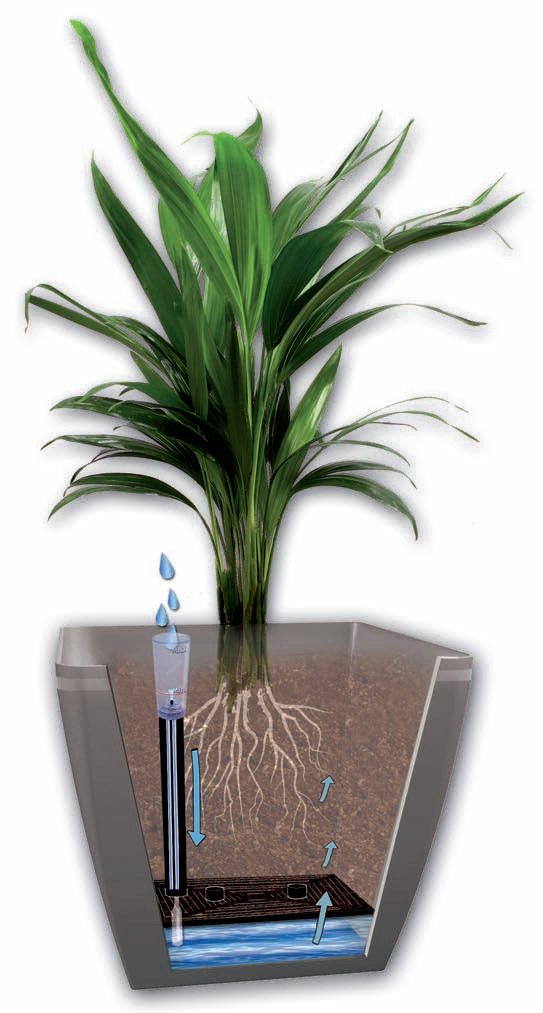
biodegradable pots
And don’t forget the biodegradable pots that we talked about earlier.
To buy the different types of pots or growing containers you can go to a nursery, garden center or even sometimes they sell them in hardware stores. You can also buy pots in online stores with discounts.
In addition to the types of pots we saw today, you can make recycled pots or growing containers by reusing materials such as bottles, pallets, tires, buckets… There are many types of recycled pots. With them you can make your garden even more ecological if possible! If you want to see some ideas about growing containers and planters made with recycled materials, I recommend the post that Lucía wrote about Recycling in the organic garden.I await your comments!

![Photo of Potato Beetle: [Identification, Elimination and Prevention]](https://www.complete-gardening.com/wp-content/uploads/2022/08/potato-beetle-identification-elimination-and-prevention-390x220.jpg)
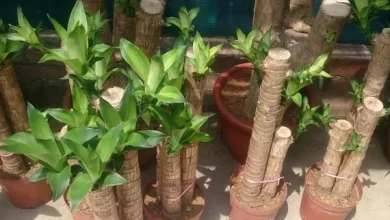
![Photo of El Fresno: [Planting, Care, Irrigation, Substrate, Pests and Diseases]](https://www.complete-gardening.com/wp-content/uploads/2022/08/el-fresno-planting-care-irrigation-substrate-pests-and-diseases-390x220.png)
